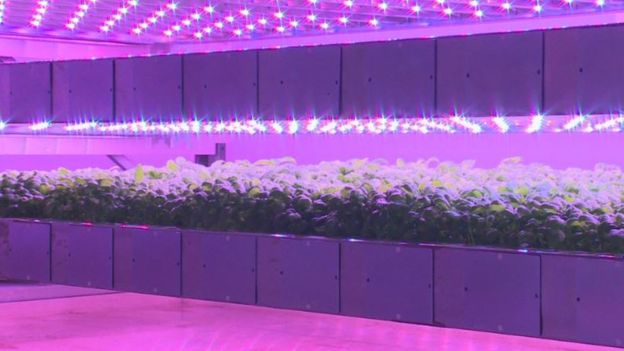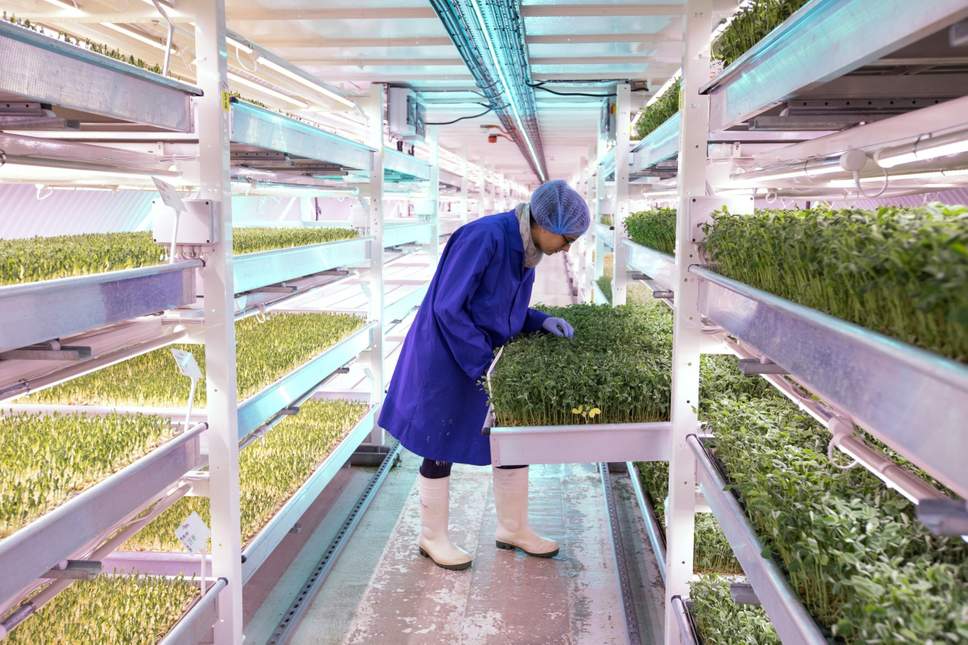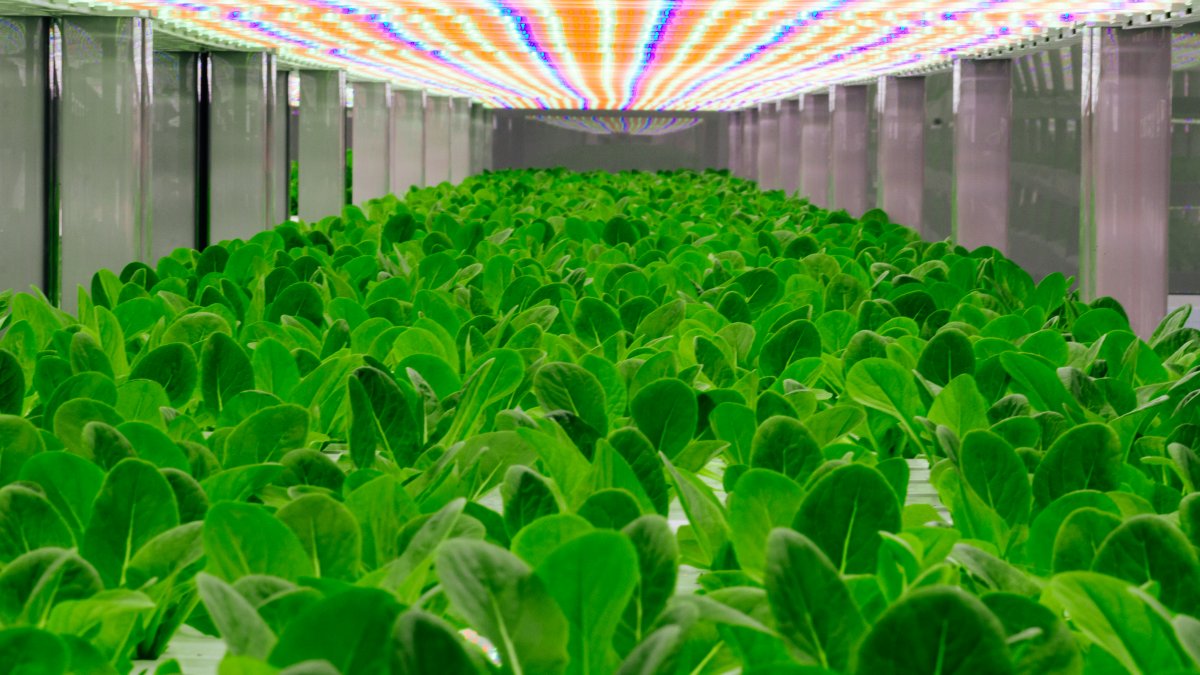Living For The City: vertical farms in Glasgow, London and Las Vegas promise fresh produce, only a tower-block away
Vertical farming is one of the most promising examples of how ingenuity, technology and enterprise can answer our pressing environmental concerns.
What if the urban demand for fruit and vegetables didn't require carbon-generating transportation over vast distances?
What if those bureaucratic tower-blocks - perhaps soon to be emptied of humans by smart machines and software - could be reoccupied by fields of eatables?
Here are three stories in the news about vertical farming in Scotland, London and Las Vegas:
Glasgow: From the BBC:
When you step into the air lock which protects Scotland's first "vertical" farm from the uncontrolled outside world, it feels like you're stepping into the future.
Inside, bright LED lights of differing colours keep the plants illuminated while vents distribute exactly the right flow of air. The idea is to create the most precise, time-efficient and waste-free method of growing.
Ultimately, this highly mechanised means of producing food could be used in some of the world's most crowded cities. Literally, the sky is the limit.
The trial centre is housed in a two-storey white building around the back of the James Hutton Institute in Invergowrie, Perth and Kinross.
London: From the Evening Standard:
The firm believes “vertical farming” will be cheaper, more efficient, higher-yielding and need fewer people than traditional methods. Produce would be grown in trays inside stacked boxes tended by wheeled, wifi-connected robo-pickers on rails, which winch up the trays when the produce is ripe and dispatch them to another robot for picking and packing. Robots would also be used for planting, pruning and spraying pesticides. The patent shows two levels of about 300 growing containers, each about 1m wide by 1.4m high, which would be supplied with water, fertiliser, light and heat.
Each tray would be tall enough to “allow the plants to grow to their natural harvesting height”, the patent says, and the boxes could be stacked 20m high or more. The patent says growing the plants upside-down, lit from below, “would reduce the energy expended by the plant to move water and nutrients against gravity and may make some species grow faster”.
Las Vegas: From Business Insider:
Las Vegas isn't the first place that springs to mind as a hub for sustainable agriculture. But the city could soon become a major purveyor of fresh greens, thanks to a new $30 million vertical-farming facility. At 215,000 square feet, it's one of the largest indoor vertical farms in the US.
The facility is home to Oasis Biotech, a startup that transformed a vacant Las Vegas industrial property into a center for hydroponic farming, a process of growing plants without soil to conserve water and speed up the maturation process. The technique has become quite popular in recent years as farmers look for ways to deliver food year-round, within hours of harvesting their crops.
Though several vertical-farming companies have failed in recent years, Oasis Biotech is leveraging the resources of Las Vegas, a city known for its high-end cuisine and celebrity restaurants.
In July, the company hosted a grand opening featuring local chefs and mixologists who prepared salads and cocktails using in-house produce. Since then, Oasis crops have been sold to Vegas restaurants and casinos under the name Evercress. Prices are similar to what a customer might pay for an organic or specialty product, according to Oasis.
Some more background: How to grow four tons of food a year in a metal box without sunlight (Technology Review).




